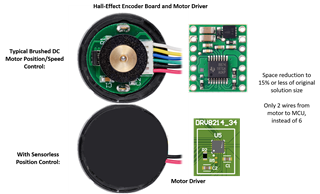Other Parts Discussed in Thread: DRV8234
Hello!
I am working on new design and want to eliminate external sensors and have a couple questions about the benefits.
- Would I pay more for DRV8214 or DRV8234 with integrated speed/voltage control and position control?
- How does this save me money or board space? I don’t want to spend money if I’m not gaining anything.


